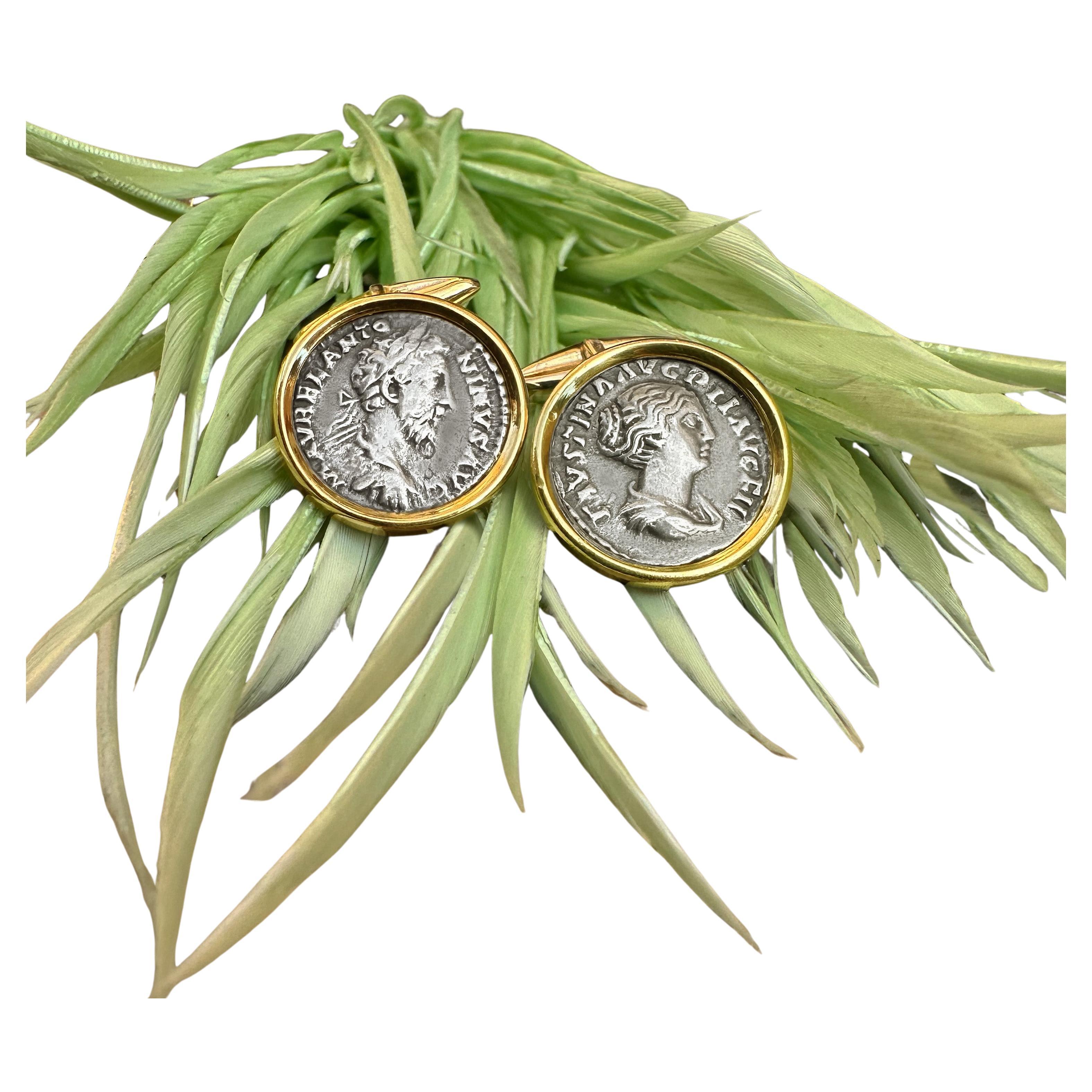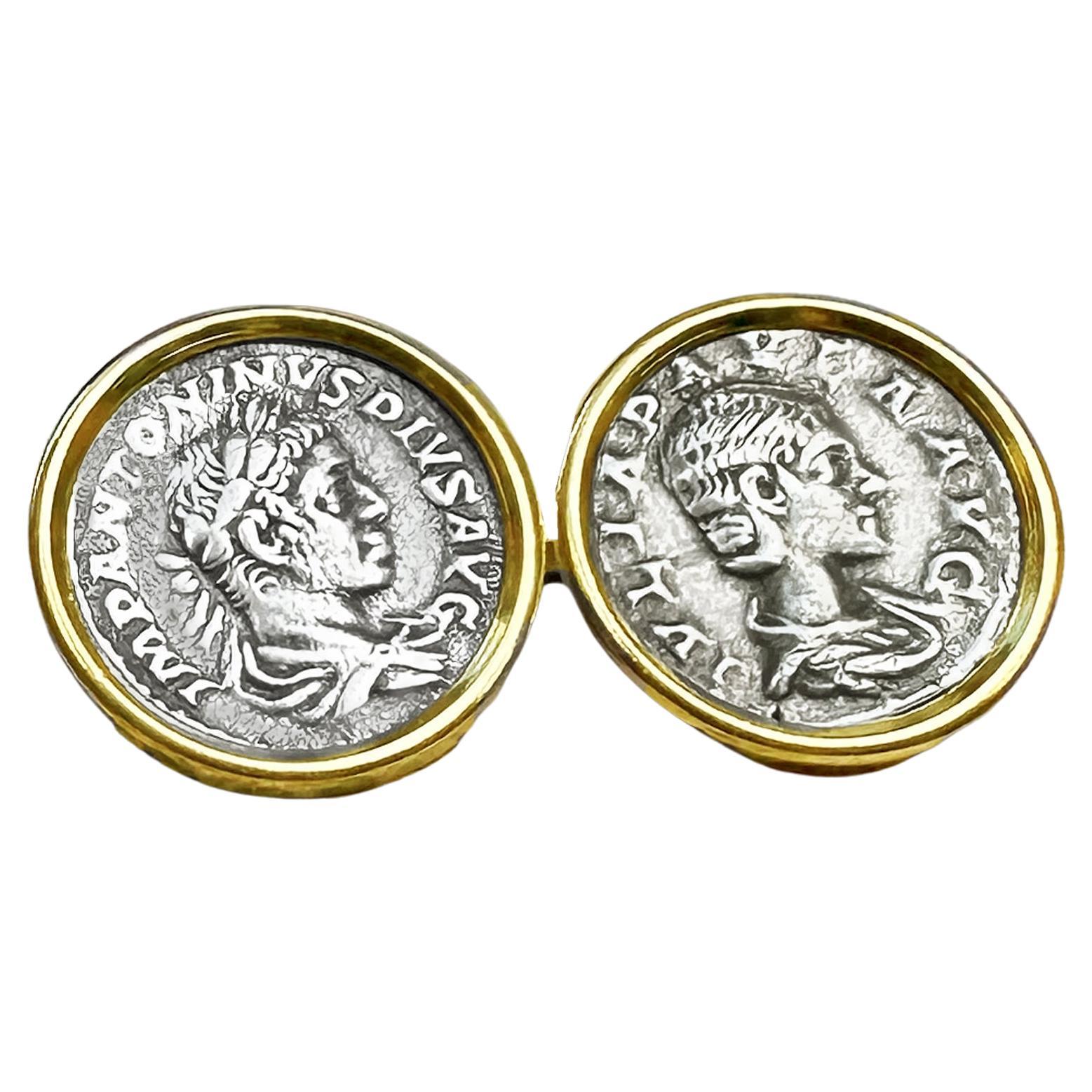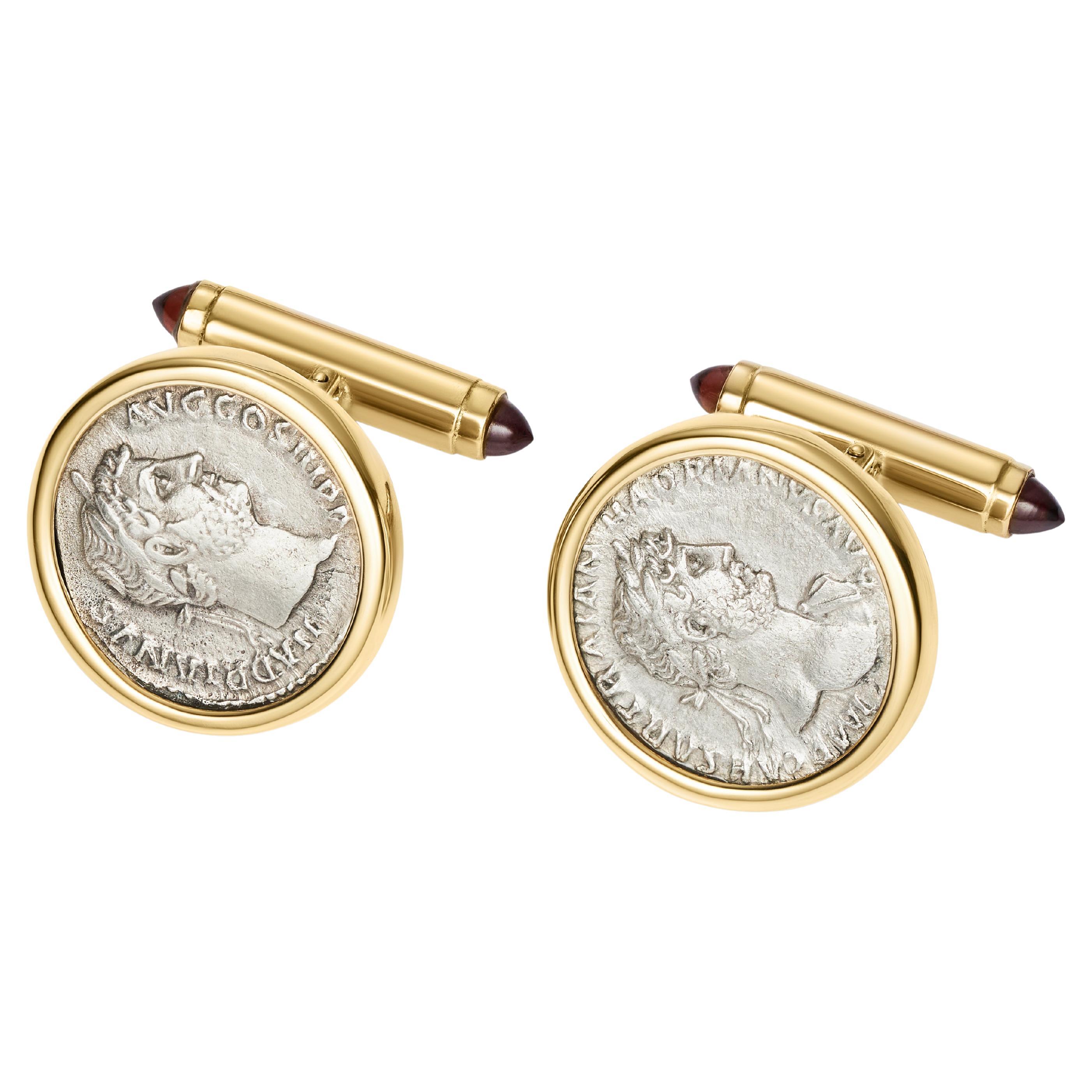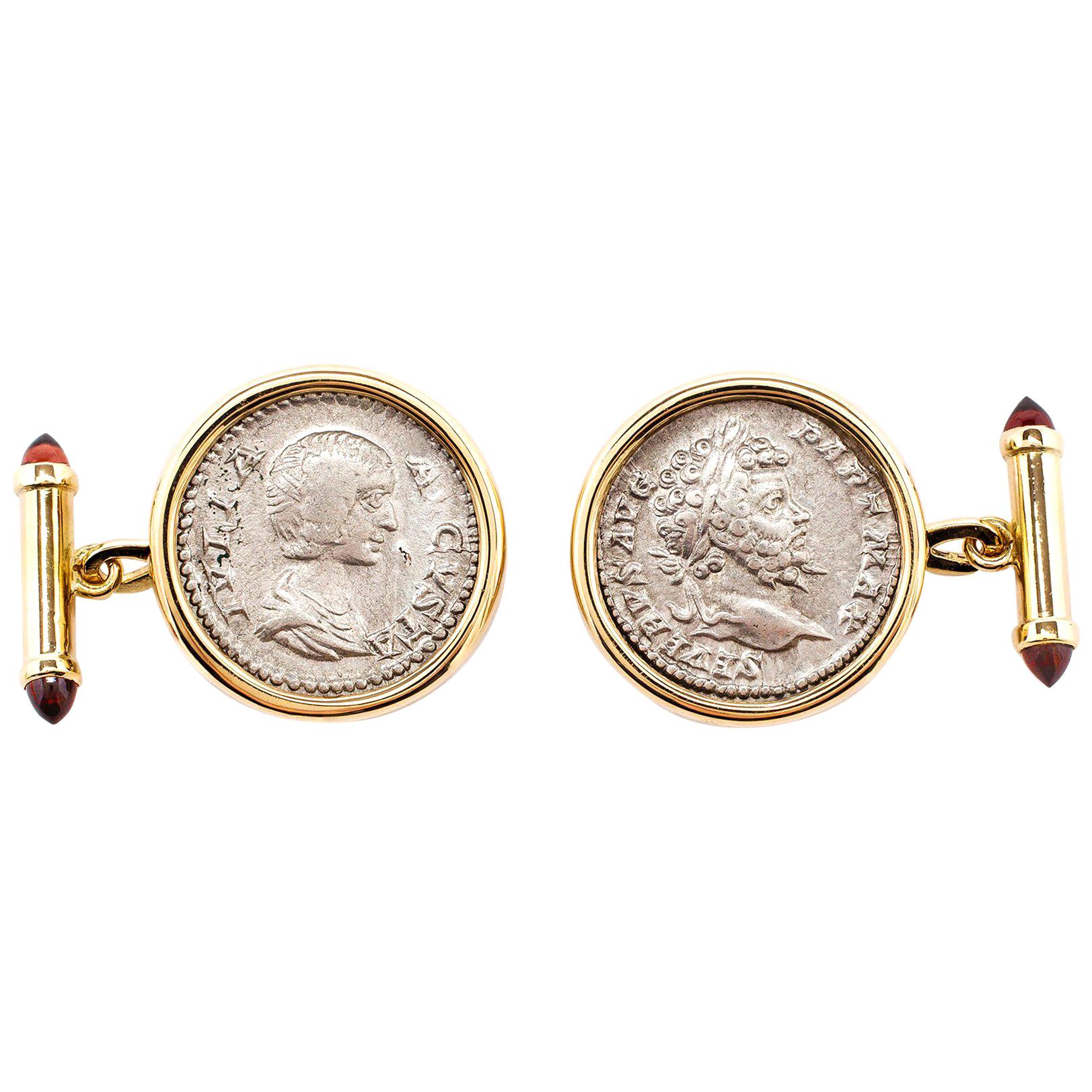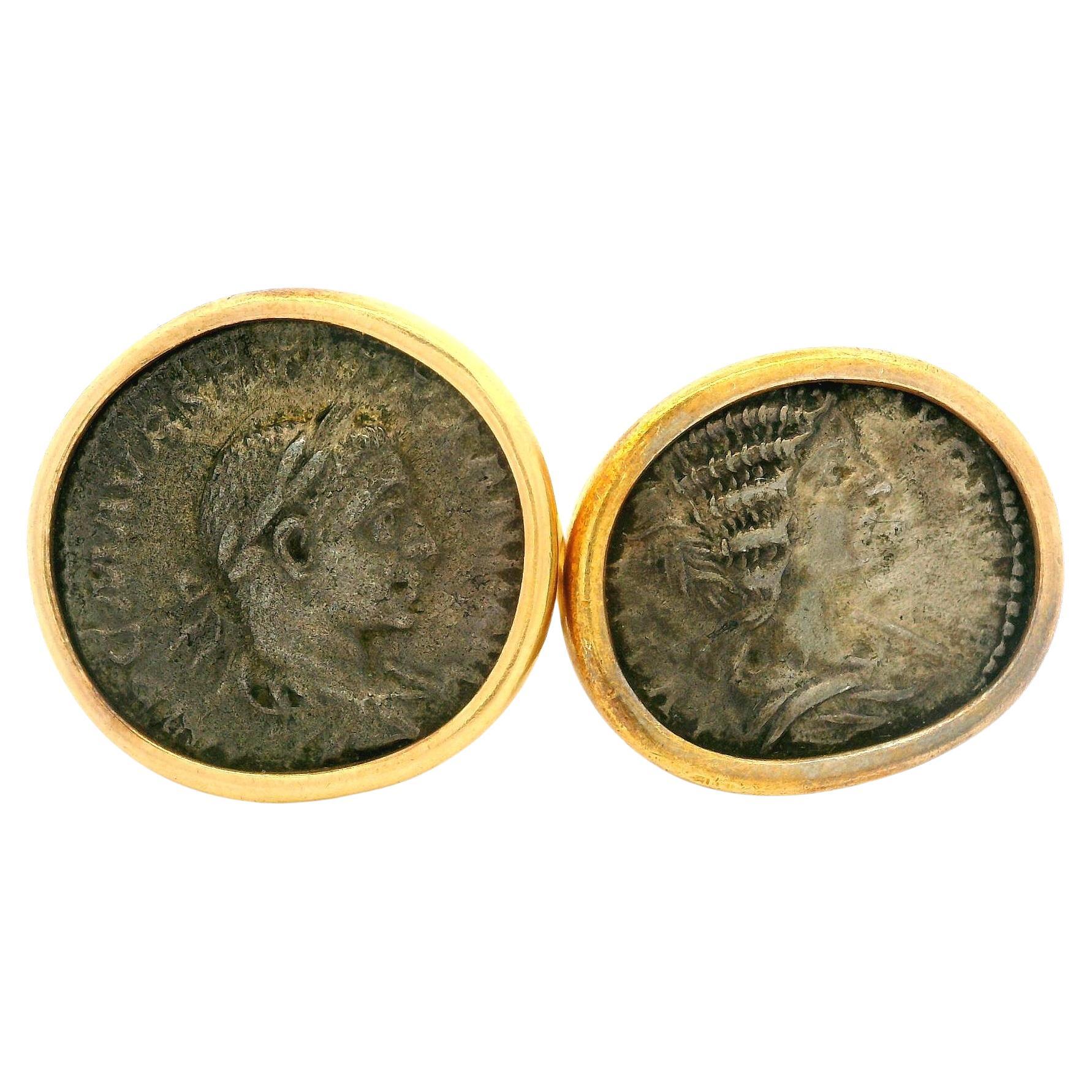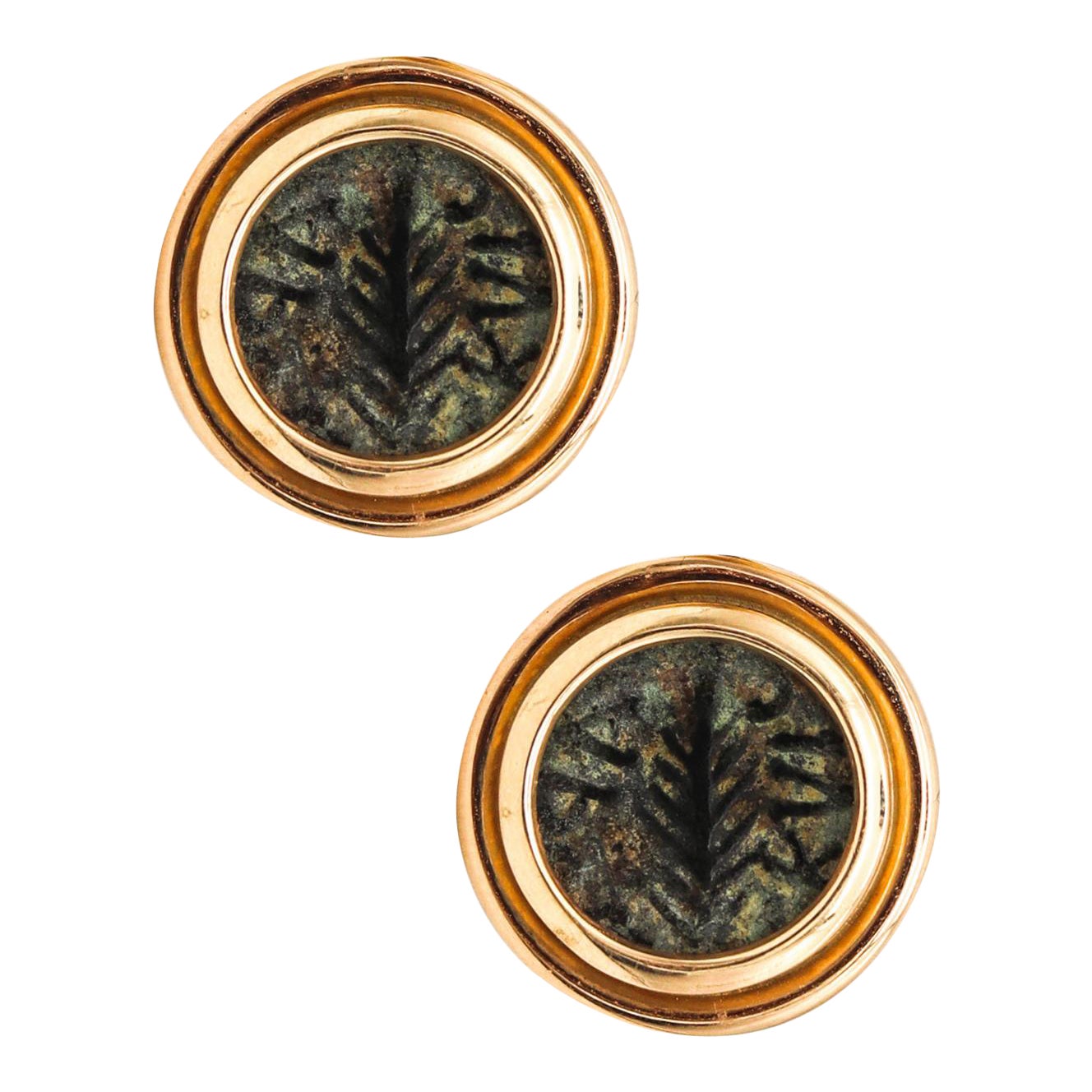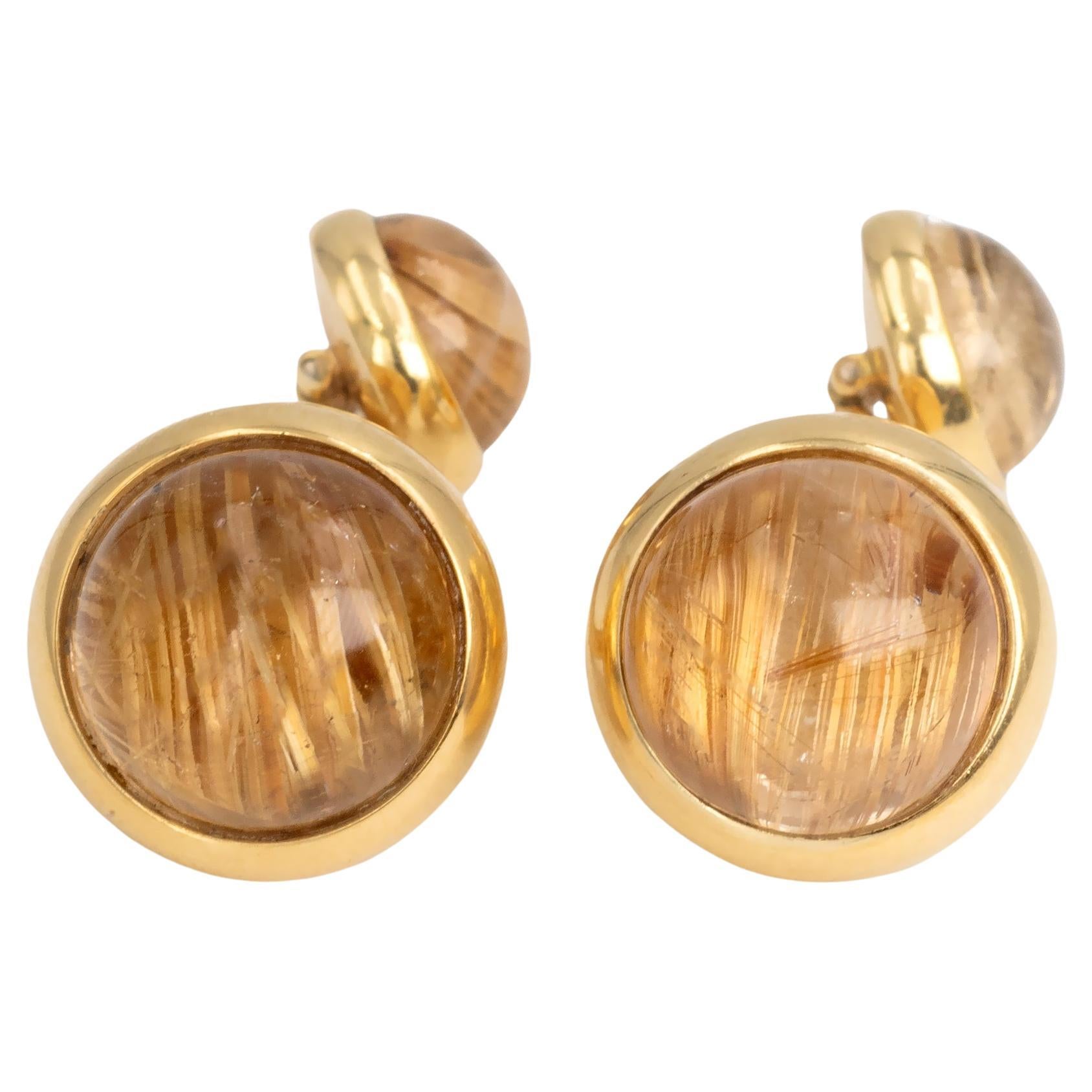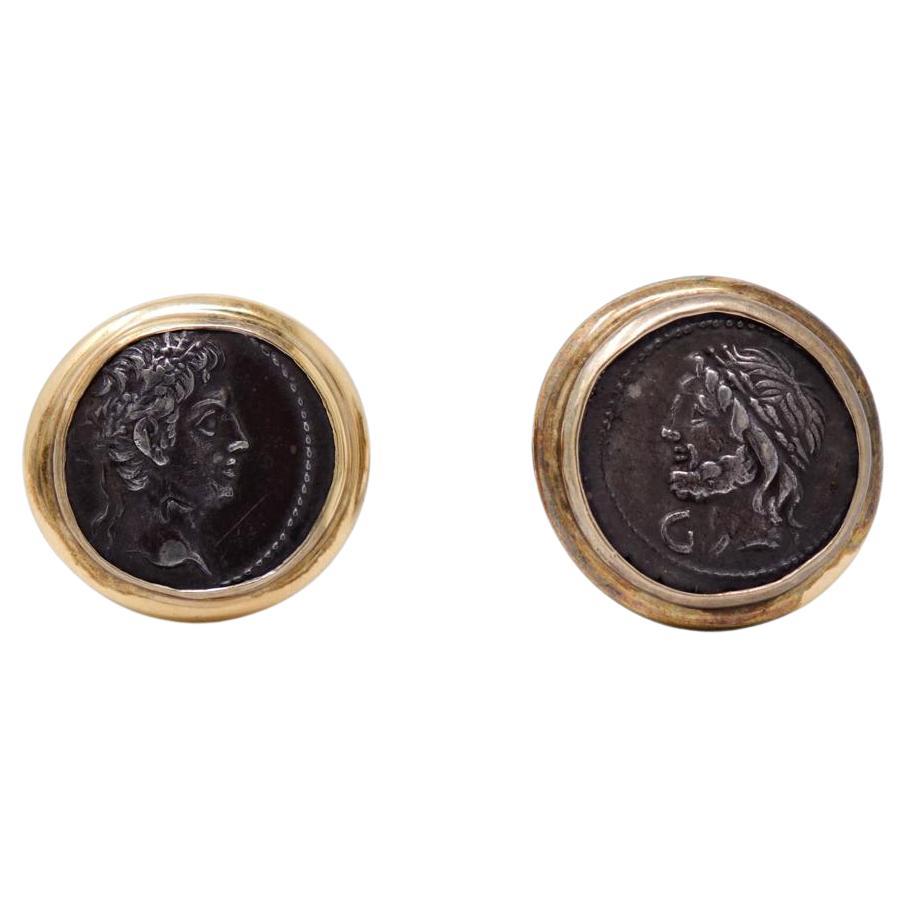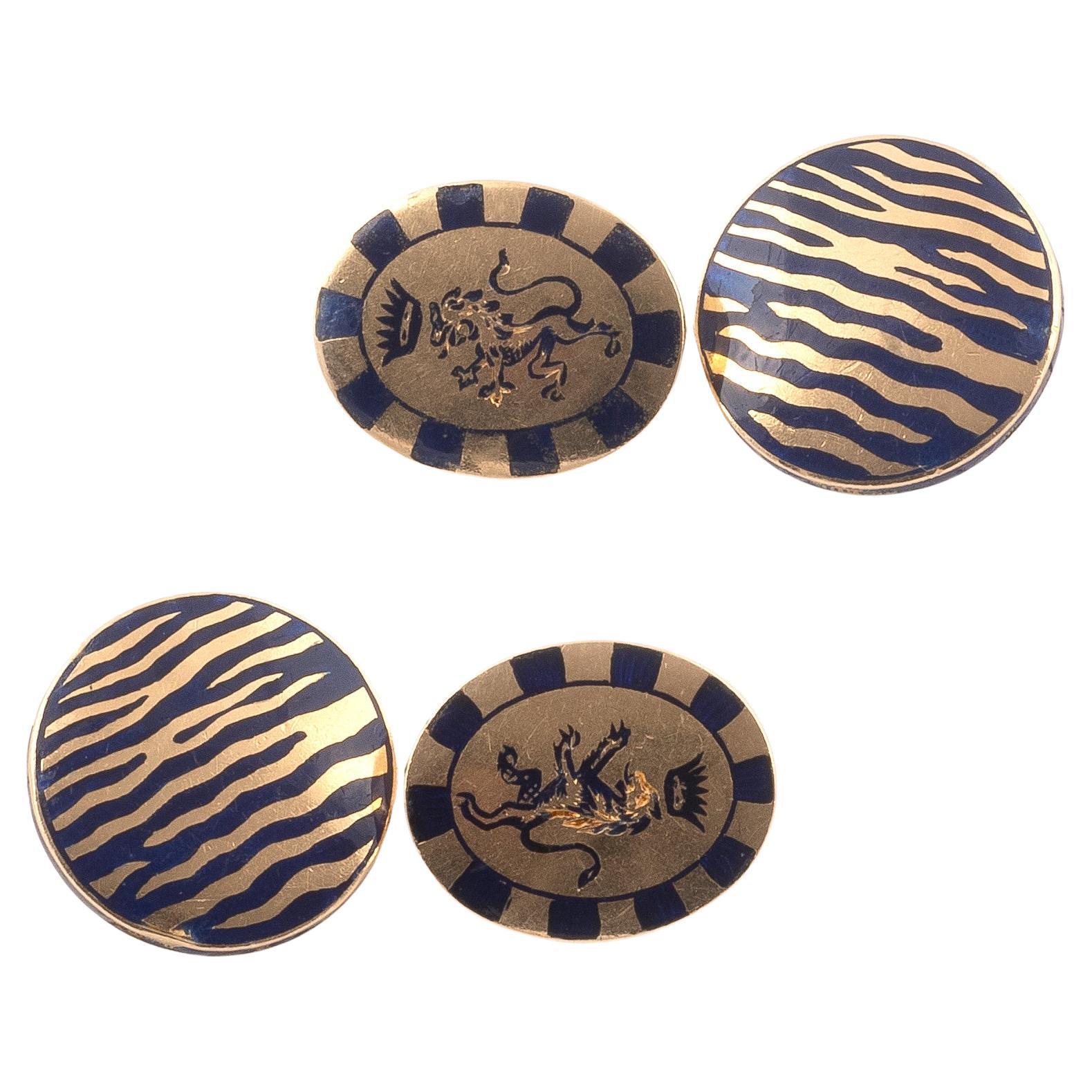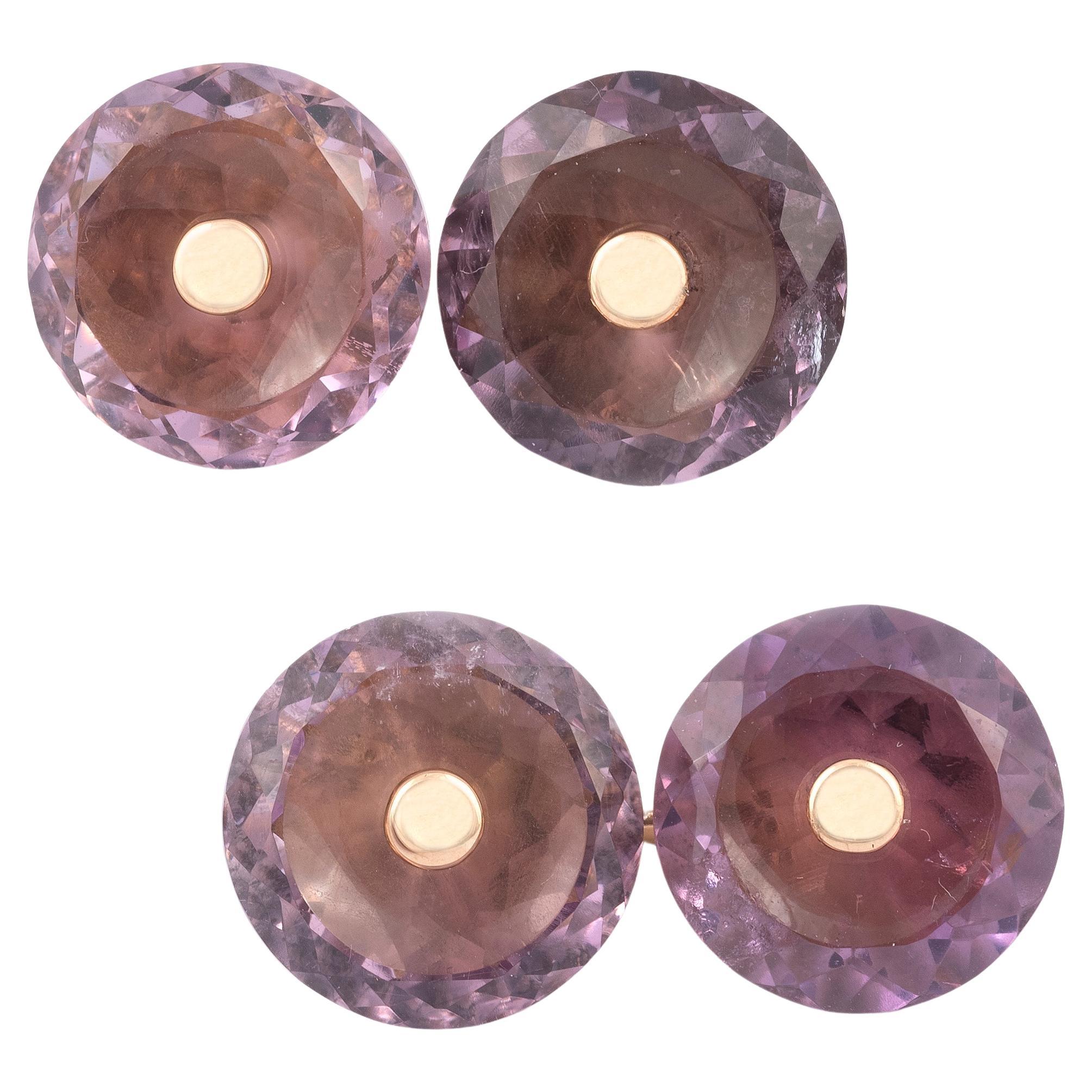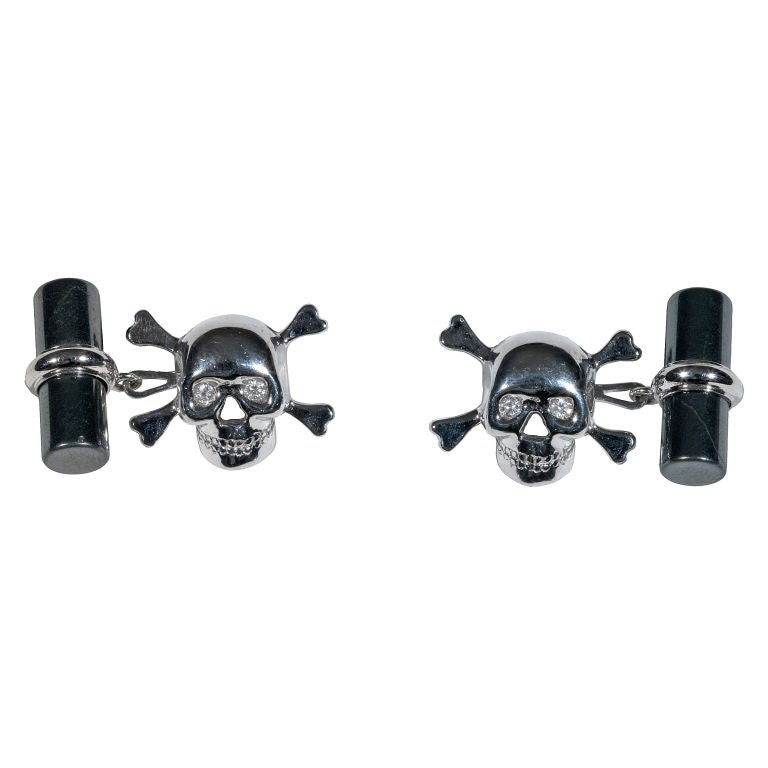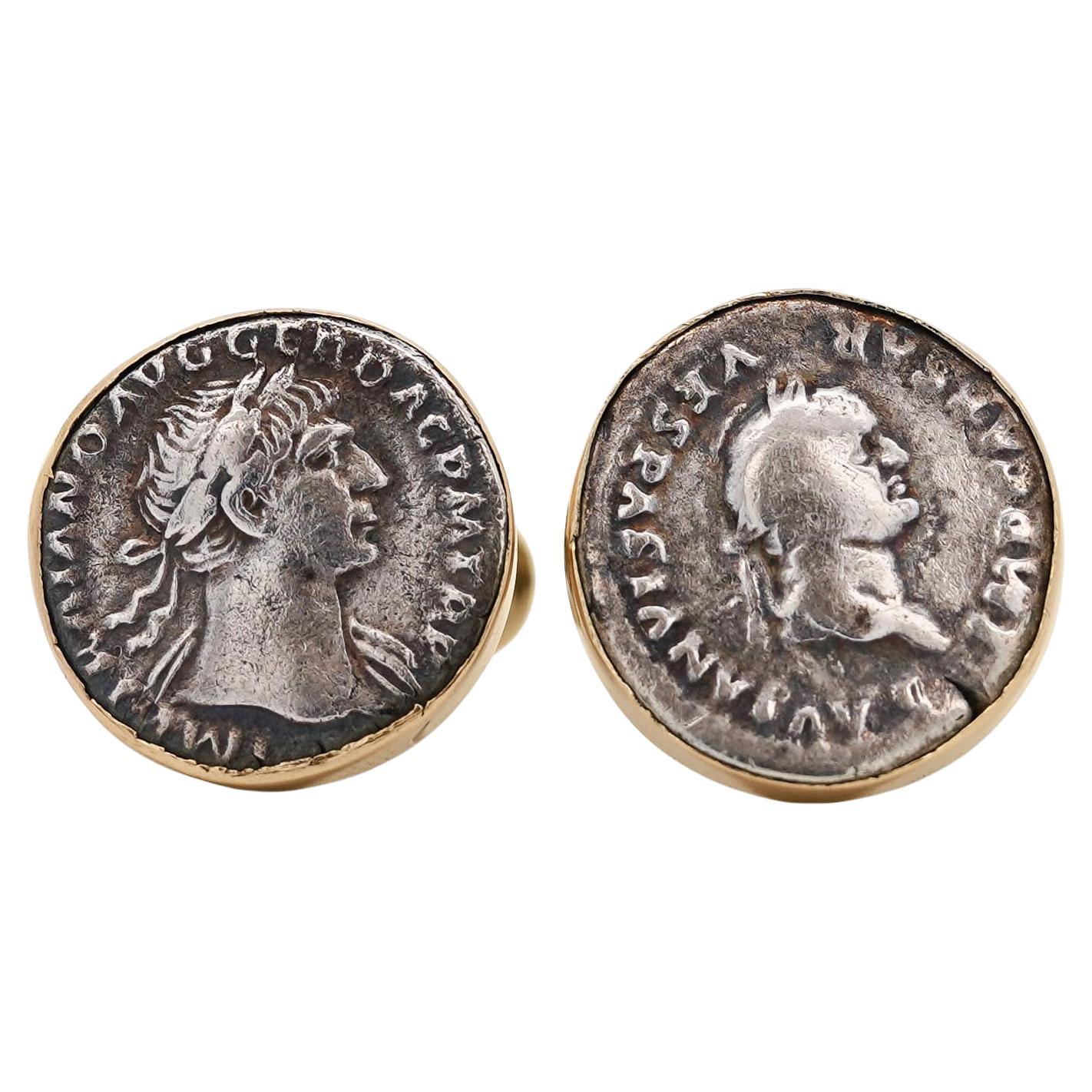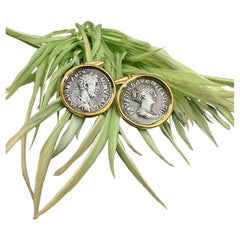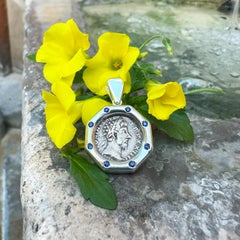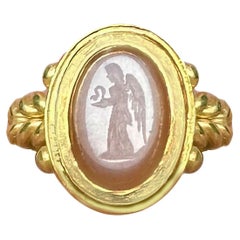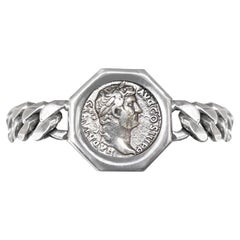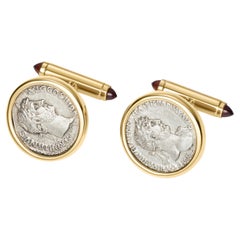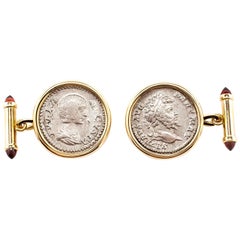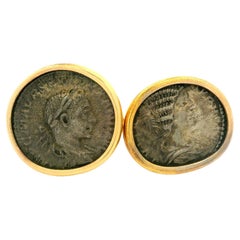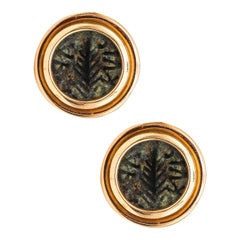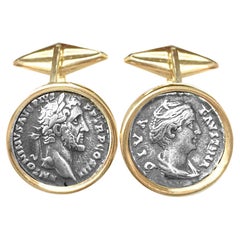
Marcus Aurelius and Faustina Roman Coin 2nd Cent.AD 18 Kt Gold Cufflinks
View Similar Items
Video Loading
Want more images or videos?
Request additional images or videos from the seller
1 of 10
Marcus Aurelius and Faustina Roman Coin 2nd Cent.AD 18 Kt Gold Cufflinks
About the Item
- Creator:SERRA
- Metal:18k Gold,Silver
- Dimensions:Diameter: 0.75 in (19 mm)
- Style:Classical Roman
- Place of Origin:Italy
- Period:15th Century and Earlier
- Date of Manufacture:2024
- Condition:
- Seller Location:Roma, IT
- Reference Number:1stDibs: LU192229893512
About the Seller
5.0
Vetted Professional Seller
Every seller passes strict standards for authenticity and reliability
1stDibs seller since 2020
45 sales on 1stDibs
Typical response time: 4 hours
Authenticity Guarantee
In the unlikely event there’s an issue with an item’s authenticity, contact us within 1 year for a full refund. DetailsMoney-Back Guarantee
If your item is not as described, is damaged in transit, or does not arrive, contact us within 7 days for a full refund. Details24-Hour Cancellation
You have a 24-hour grace period in which to reconsider your purchase, with no questions asked.Vetted Professional Sellers
Our world-class sellers must adhere to strict standards for service and quality, maintaining the integrity of our listings.Price-Match Guarantee
If you find that a seller listed the same item for a lower price elsewhere, we’ll match it.Trusted Global Delivery
Our best-in-class carrier network provides specialized shipping options worldwide, including custom delivery.More From This Seller
View AllRoman coins 18kt Gold Cufflinks depicting Marcus Aurelius and his wife Faustina
Located in Roma, IT
These 18 Kt gold cufflinks feature two genuine Roman silver denarii from the 2nd century AD, depicting Emperor Marcus Aurelius and his wife, Faustina the Younger. Marcus Aurelius (26...
Category
Antique 15th Century and Earlier Italian Classical Roman Cufflinks
Materials
18k Gold, Silver
MARCUS AURELIUS Ancient Roman Coin 2nd Cent. AD Pendant w/ sapphires
Located in Roma, IT
This sterling silver pendant holds an authentic Roman coin dating back to the 2nd century AD, depicting Emperor Marcus Aurelius, surrounded by 8 sapphires. The reverse side features ...
Category
Antique 15th Century and Earlier Italian Classical Roman Pendant Necklaces
Materials
Sapphire, 18k Gold, Silver
Agate Roman Intaglio 1st-2nd cent.AD 18kt Gold Ring depicting Nike with Snake
Located in Roma, IT
This 18 Kt gold ring, meticulously crafted by our skilled goldsmiths, showcases an authentic Roman two layer agate intaglio dating back to the 1st-2nd century AD.
The intaglio depic...
Category
Antique 15th Century and Earlier Italian Classical Roman Cocktail Rings
Materials
Agate, Gold
Emperor Hadrian Roman Coin 2nd Cent. AD Sterling Silver Bracelet
Located in Roma, IT
An authentic silver denarius from the 2nd century AD depicting the emperor Hadrian has been set in this solid sterling silver bracelet. On the reverse side of the coin we can see Con...
Category
Antique 15th Century and Earlier Italian Classical Roman Chain Bracelets
Materials
Sterling Silver
Ancient Roman coins 2nd Cent. AD Silver Bracelet depicting Five Emperors
Located in Roma, IT
Five authentic Roman coins have been set in this bracelet depicting the following emperors: Trajan, Hadrian, Antoninus Pius, Marcus Aurelius, Septimius Severus. In order, on the back...
Category
Antique 15th Century and Earlier Italian Classical Roman Retro Bracelets
Materials
Sterling Silver
Roman Coin 2nd Cent. AD Pendant w/black diamonds depicting Emperor Trajan
Located in Roma, IT
This exquisite silver pendant showcases a genuine Roman silver denarius coin dating back to the 2nd century AD, depicting Emperor Trajan on its front and Genius Popoli Romani on the ...
Category
Antique 15th Century and Earlier Italian Classical Roman Pendant Necklaces
Materials
Black Diamond, Silver
You May Also Like
Dubini Hadrian Roman Ancient Silver Denarius Coin Garnet 18k Gold Cufflinks
By DUBINI
Located in London, GB
These DUBINI coin cufflinks from the 'Empires' collection feature authentic Roman Imperial coins minted circa A.D. 133-135 set in 18K yellow gold with garnet...
Category
21st Century and Contemporary Italian Classical Roman Cufflinks
Materials
Garnet, 18k Gold, Silver
$13,945 / set
Free Shipping
Dubini Empires Roman Ancient Silver Denarius Coin Garnet 18K Gold Cufflinks
By DUBINI
Located in London, GB
These DUBINI coin cufflinks from the 'Empires' collection feature authentic Roman Imperial silver coins minted circa 210 - 211 A.D set in 18K yellow gold w...
Category
21st Century and Contemporary Italian Classical Roman Cufflinks
Materials
Garnet, 18k Gold, Silver
Vintage Bvlgari 18k Yellow Gold Silver Ancient Roman Empire Coin Cufflinks
By Bulgari
Located in Montclair, NJ
Material: Solid 18k Yellow Gold - Silver Coins
Weight: 23.6 Grams
Panel Dimensions: 18.6x19.7mm (0.73x0.77")(approx.)
Backing: Swivel back
Clearance: 11.8mm (approx.)
Hallmark: Bvlga...
Category
20th Century Cufflinks
Materials
Gold, 18k Gold, Yellow Gold, Silver
Ancient Rome Judaea 58 AD Bronze Prutah Coins Cufflinks in 14Kt Yellow Gold
Located in Miami, FL
Cufflinks with ancient Roman coins from Judaea.
Great pair of rare ancient Judean (Jerusalem) coins minted during the period of the Roman Empire administration. These bronze coins were called Prutah and were minted in the city of Jerusalem around 58-59 AD. Cradled in the name of the Roman procurator Porcio Festo (59-62 AD) under the rule of Emperor Nero (54-68 AD).
These genuine coins was carefully mounted in an elaborated cufflinks with double frames crafted in solid yellow gold of 14 karats with polished finish and fitted with movable hinged pressured T-bars for comfort fit.
Obverse: Greek letters KAICAPOC (Caesar) and date LЄ (year 5=58/59 A.D), palm branch.
Reverse: Greek letters NЄP WNO C (Nero) in wreath tied at the bottom with an X.
Mint: Roman mint at Jerusalem.
Numismatic Literature: Hendin-1351 (5th Edition); Hendin-653 (3rd Edition).
Weight: Total of 17.8 Grams, (11.41 Dwt). Coins are approximate 2.45 Grams each.
Measurements: 21.6 mm by 21.6 mm (0.85 x 0.85 Inches).
Hallmarks: Stamped with the maker's mark and the 14kt gold assay mark.
Porcius Festus was procurator of Judea from about AD 58 to 62, succeeding Antonius Felix. His exact time in office is not known. He inherited all of the problems of his predecessor in regard to the Roman practice of creating civic privileges for Jews. Only one other issue bedeviled his administration, the controversy between Agrippa II and the priests in Jerusalem regarding the wall erected at the temple to break the view of the new wing of Agrippa's palace.
During his administration, Jewish hostility to Rome was greatly inflamed by the civic privileges issue. Feelings were aroused which played an important part in the closely following Jewish War of AD 66.
In the New Testament, the Apostle Paul had his final hearing before Festus. In Acts 25:12, Festus sought to induce Paul to go to Jerusalem for trial; Paul appealed to the Emperor. the appeal resulted in Paul being deported to Rome in the autumn of AD 58. Acts 25-26.
Nero (Latin: Nero Claudius Caesar Augustus Germanicus;15 December 37 - 9 June 68) was Roman Emperor from 54 to 68, and the last in the Julio-Claudian dynasty. Nero was adopted by his great uncle Claudius to become his heir and successor, and succeeded to the throne in 54 following Claudius' death. During his reign, Nero focused much of his attention on diplomacy, trade, and enhancing the cultural life of the Empire. He ordered theaters built and promoted athletic games. During his reign, the redoubtable general Corbulo conducted a successful war and negotiated peace with the Parthian Empire. His general Suetonius Paulinus crushed a revolt in Britain. Nero annexed the Bosporan Kingdom to the Empire and began the First Roman-Jewish War.
In 64, most of Rome was destroyed in the Great Fire of Rome, which many Romans believed Nero himself had started in order to clear land for his planned palatial complex, the Domus Aurea. In 68, the rebellion of Vindex in Gaul and later the acclamation of Galba in Hispania drove Nero from the throne. Facing assassination, he committed suicide on 9 June 68 (the first Roman emperor to do so) His death ended the Julio-Claudian Dynasty, sparking a brief period of civil wars known as the Year of the Four Emperors. Nero's rule is often associated with tyranny and extravagance. He is known for many executions, including that of his mother, and the probable murder by poison of his stepbrother Britannicus.
He is infamously known as the Emperor who "fiddled while Rome burned" and as an early persecutor of Christians. He was known for having captured Christians to burn them in his garden at night for a source of light. This view is based on the writings of Tacitus, Suetonius, and Cassius Dio, the main surviving sources for Nero's reign. Few surviving sources paint Nero in a favorable light. Some sources, though, including some mentioned above, portray him as an emperor who was popular with the common Roman people, especially in the East. Some modern historians question the reliability of ancient sources when reporting on Nero's tyrannical acts.
Prutah (Hebrew: פרוטה) is a word borrowed from the Mishnah and the Talmud, in which it means "a coin of smaller value". The word was probably derived originally from an Aramaic word with the same meaning. The prutah was an ancient copper Jewish coin...
Category
Late 20th Century Italian Classical Roman Cufflinks
Materials
14k Gold, Yellow Gold, Bronze
$1,762 Sale Price
25% Off
Free Shipping
18KT. Gold and Rutilated Quartz Cufflinks
By Claris-A
Located in Monte Carlo, MC
Elegant Cufflinks in 18 Karat Gold with round cabochon Rutilated Quartz bezel set on each end.
The modern design is pure and well-executed. The Cufflinks are very well-made and hefty...
Category
21st Century and Contemporary French Modern Cufflinks
Materials
Quartz, 18k Gold, Yellow Gold, Gold
Authentic Roman Silver Coins set as Cufflinks in 14K Gold
Located in Point Richmond, CA
Authentic Roman Coin Cufflinks. Each silver coin set in 14K yellow gold frame, open at the back with a post and spring flipped whale-back. Each frame is stamped 14K FOXS (A Seattle Jeweler). One coin with the frame inscription “MARCH 1987” and the other “E.S. to P.S.”. One denarius coin was struck during the Reign of Augustus, approximatley 19 B.C. with two laurel trees having CAESAR above and AVGVSTVS below on the back and the front side with a profile of the head of Augustus (right). The other denarius coin was struck during the Roman Republic approximately 106 B.C. with a triumphal Jupiter quadriga galloping right underneath with the letters L-SCIPASIAC on the back side being a reference to a commemoration of Lucius Cornelius Scipio Asiaticus, the front of the coin has a laureated and bearded head of Jupiter Capitolinus (left) with the control-letter of “G” under the chin.
Condition: Pre-Owned - Excellent.
Coin Size: 17mm in diameter.
Cufflink Size: 22mm in diameter
Post Length: 15mm.
Total Weight: 19 grams
Age: Cufflinks, circa 1985 and the coins, 106 - 27 B.C.
For a similar Augustus coin...
Category
Vintage 1980s Italian Classical Roman Cufflinks
Materials
14k Gold, Silver
Recently Viewed
View AllMore Ways To Browse
Marcus Aurelius
Scottish 18k Gold
Hadrian Coin
Marcus Aurelius Coin
Estate 18k Chain Necklace
Rolex Silver Rolex
Wales Jewellery
14K Gold Citrine Rings
18k Vintage Pearl Earrings
5 Carat Diamond Hoop
Italian Jade Earrings
Pearl Button
Red Diamonds Stud Earrings
Rolex Automatic Winding
Rubellite Tourmaline
Yellow Gold And Natural Blue Sapphire Earrings
18k South Sea Pearl Ring
585 Diamond Ring
